#turbulent flow
Explore tagged Tumblr posts
Text
Das Gesicht des Turbulenzentänzers

Today's drawing - Title: "Face of the Turbulenzentänzer* - Disintegration and Re-integration"
* "Turbulenzentänzer" is a German neologism and translates to "dancer of turbulences" or "turbulence dancer".

(Ballpoint pen on DIN A4 paper)
[2023/10/31]
- - -- --- -----
Details:
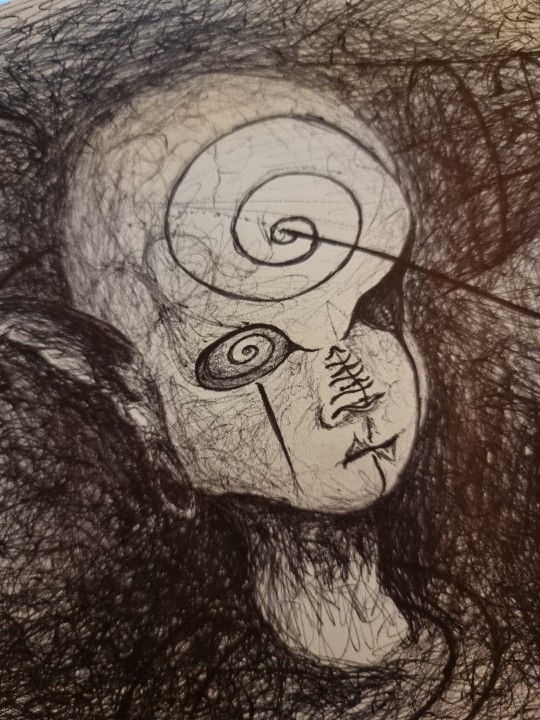


#surrealism#surreal#surreal art#spirals#curved space#alien#alienation#depersonalization#derealisation#disintegration and reintegration#dissipation#thermodynamics#flow#turbulenzentänzer#turbulence#turbulent flow#fluid dynamics#life#metaphor#knottys art#knotty et al#drawing#ballpoint pen#the red thread of time#red thread of time#knotty#art
30 notes
·
View notes
Text
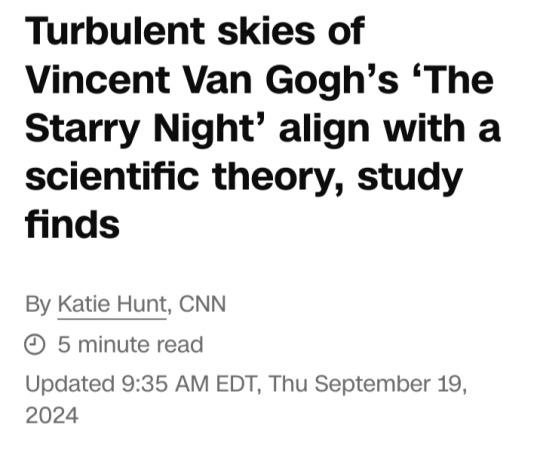

(CNN) — The dappled starlight and swirling clouds of Vincent van Gogh’s “The Starry Night” are thought to reflect the artist’s tumultuous state of mind when he painted the work in 1889.
Now, a new analysis by physicists based in China and France suggests the artist had a deep, intuitive understanding of the mathematical structure of turbulent flow.
As a common natural phenomenon observed in fluids — moving water, ocean currents, blood flow, billowing storm clouds and plumes of smoke — turbulent flow is chaotic, as larger swirls or eddies, form and break down into smaller ones.
It may appear random to the casual observer, but turbulence nonetheless follows a cascading pattern that can be studied and, at least partially, explained using mathematical equations.
“Imagine you are standing on a bridge, and you watch the river flow. You will see swirls on the surface, and these swirls are not random.
They arrange themselves in specific patterns, and these kinds of patterns can be predicted by physical laws,” said Yongxiang Huang, lead author of the study that published Tuesday in the scientific journal Physics of Fluids.
Huang is a researcher at State Key Laboratory of Marine Environmental Science & College of Ocean and Earth Sciences at Xiamen University in southeastern China.
“The Starry Night” is an oil-on-canvas painting that, the study noted, depicts a view just before sunrise from the east-facing window of the artist’s asylum room at Saint-Rémy-de-Provence in southern France.
Van Gogh had admitted himself to an asylum there after mutilating his left ear.
Using a digital image of the painting, Huang and his colleagues examined the scale of its 14 main whirling shapes to understand whether they aligned with physical theories that describe the transfer of energy from large- to small-scale eddies as they collide and interact with one another.

‘The Starry Night’ and turbulence theories
The atmospheric motion of the painted sky cannot be directly measured, so Huang and his colleagues precisely measured the brushstrokes and compared the size of the brushstrokes to the mathematical scales expected from turbulence theories.
To gauge physical movement, they used the relative brightness or luminance of the varying paint colors.
They discovered that the sizes of the 14 whirls or eddies in “The Starry Night,” and their relative distance and intensity, follow a physical law that governs fluid dynamics known as Kolmogorov’s Theory of Turbulence.
In the 1940s, Soviet mathematician Andrey Kolmogorov (1903–1987) described a mathematical relationship between the fluctuations in a flow’s speed and the rate at which its energy dissipates.

Huang and the team also found that the paint, at the smallest scale, mixes around with some background swirls and whirls in a fashion predicted by turbulence theory, following a statistical pattern known as Batchelor’s scaling.
Batchelor’s scaling mathematically represents how small particles, such as drifting algae in the ocean or pieces of dust in the wind, are passively mixed around by turbulent flow.
“This is cool. Indeed this is the type of statistics you would expect from algae blooms being swept around by ocean currents, or dust and particulates in the air,” said James Beattie, a postdoctoral researcher in the Department of Astrophysical Sciences at Princeton University in New Jersey, in an email.
Beattie wasn’t involved in this study but has conducted similar research on the artwork.
“In my paper, I only ever really looked at the large (swirls in the painting), so I didn’t see this second relation,” he said, referring to the Batchelor’s scaling.
‘An amazing coincidence’
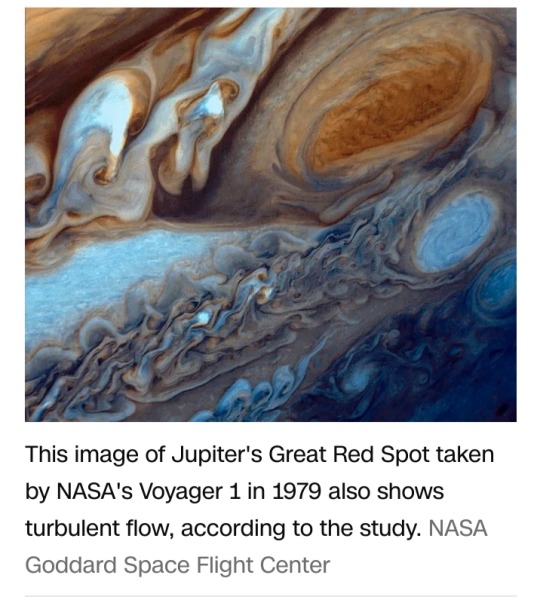
Of course, Huang said, van Gogh would not have been aware of such equations but likely he spent a lot of time observing turbulence in nature.
“I think this physical relationship must be embedded in his mind so that’s why when he made this famous ‘Starry Night’ painting, it mimics the real flow,” Huang said.
Beattie agreed: “It’s an amazing coincidence that Van Gogh’s beautiful painting shares many of the same statistics as turbulence,” he said.
“This makes some sense — the models have been constructed to try to capture the statistics of eddies and swirls on multiple scales, each swirl communicating with other swirls through the turbulent cascade.
In some sense, Van Gogh painted something that represents this phenomenon, so why shouldn’t there be some convergence between the theoretical models and the statistics of Van Gogh’s swirls?”
The study team performed the same analysis and detected the same phenomenon in two other images:
— a painting, “Chain Pier, Brighton,” created by British artist John Constable in 1826-7;
— a photograph of Jupiter’s Great Red Spot, taken by NASA’s Voyager 1 spacecraft on 5 March 1979.
“Unlike ‘The Starry Night,’ this painting lacks well-defined swirling patterns, but the clouds are rich of structures with different scales, resembling those frequently seen in the sky,” the study noted of Constable’s artwork.

On display at the Museum of Modern Art in New York, “The Starry Night” is an enormously popular work of art that has been recreated in Lego bricks, drones and dominoes.
Huang said that scientists had long struggled to describe turbulent flow in fluid dynamics in a way that would allow them to predict the phenomenon and that a complete explanation remains a prevailing mystery of physics.
A thorough understanding would help with weather forecasting, flight turbulence and many other processes, he said.
“Even after more than 100 years (of) study, we even don’t know how to define this complex phenomenon,” Huang said.
“It’s extremely important, but it’s extremely difficult.”
"The fact that “The Starry Night” matched statistical models of turbulence even though the artwork doesn’t actually move could suggest that the statistical methods and tools are less precise than scientists may have thought," Beattie said.
"The painting can’t be precisely measured because it’s “actually not turbulence. … (I)t has no kinetic energy,” he said.
However, Beattie said that he was a huge fan of the work of art and that it reflected universality and the beauty of turbulence.
“I deeply love the fact that I can take my understanding of the turbulence in the plasma between galaxies and apply it to the turbulence between stars, between Earth and the Sun or in our own lakes, oceans and atmosphere,” he said.
“What I take away from studies like this is that (van Gogh) captured some of this universality in the beautiful (‘Starry Night’),” Beattie added.
“And I think people know this. They know that something wonderful has been embedded in this painting and we are drawn to it.”
#Vincent van Gogh#The Starry Night#painting#artwork#mathematical structure#turbulent flow#turbulence#mathematical equations#Yongxiang Huang#Physics of Fluids#State Key Laboratory of Marine Environmental Science & College of Ocean and Earth Sciences#Xiamen University#Saint-Rémy-de-Provence#asylum#whirling shapes#brushstrokes#whirls#eddies#Andrey Kolmogorov#Theory of Turbulence#Batchelor’s scaling#Museum of Modern Art#scientific theory
3 notes
·
View notes
Text
I wish Van Gogh was here to paint Jupiter.




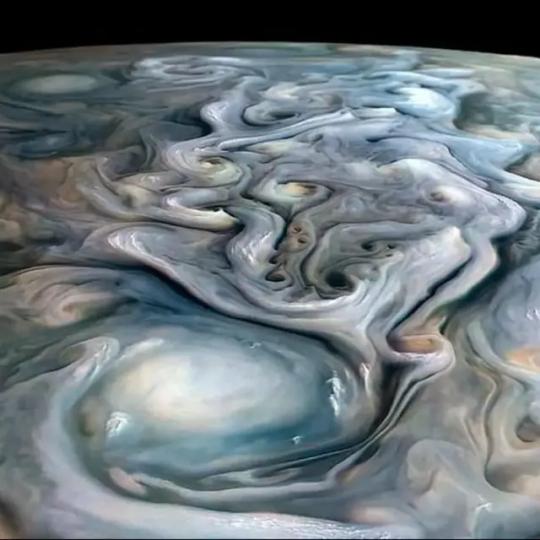





Jupiter Ascending
3K notes
·
View notes
Text
A Comet's Tail

A comet's tail changes from day-to-day depending on how much material the comet is losing and how strong the solar wind it's facing is. (Image credit: Shengyu Li & Shaining; via APOD) Read the full article
#comet#flow visualization#fluid dynamics#magnetohydrodynamics#physics#plumes#science#solar wind#turbulence
461 notes
·
View notes
Text



Recently had the privilege of helping my friend out with redesigning his Vtuber!
If you like chill gaming and aviation go check out Flow Turbulence on twitch!
50 notes
·
View notes
Text

I have been formulating a sonic OC for the past few months whomst I've been unable to complete due to my accursed wrist strain acting up, only for Surge to now be given a big jacket much like the one I gave her. Curses. Anyway this is Flow the Porcupine, she exists because I was learning about the differences between pyroclastic flows and pyroclastic surges. She has fire powers and her only personality trait is that she spouts rock facts. I hope you all like her.
#if you're curious while there are several differences between pyroclastic flows and surges#the main one is flows have a high particle:gas ratio and are more laminar as a result#while surges are less particle rich and more turbulent#art#sth#idw sonic#surge the tenrec#kitsunami the fennec#im still not crazy about her design so i might revisit it one day
8 notes
·
View notes
Text
Ah, famously unhelpful clippy.

#ideal conditions DO exist#that's the basis of chemistry#there are ideal conditions for every molecule and every reaction and down to every atom there are ideal conditions#the people in your life telling you there are no ideal conditions are like turbulent flow against you#and as far as i can recall life has evolved to use that turbulence as energy. see brownian motion and the latches in your cellular automata
172K notes
·
View notes
Text

A PROMPT DEVOID OF ANY EXECUTIVE EXPECTATION AS A TECHNIQUE FOR ACCESSING AN AVOIDANT FLOW STATE.
Come up with a short broody poetic prose describing both the dread and the joy he feels returning to a place he enjoys greatly. The writing should obscure every meaning that could bring him too close to a known path, as his path is known only by a few.
The photograph includes the tools he himself is using, as it is a finished edit colorized and perfected as a surreal piece because it was developed within that excellent software. The art integrates the designing machinery along the emergent consciousness as co-performers enact the art piece as inextricable.
Beyond the meta-comment, this is a portrait by a cyborg crafting on itself. nothing to talk about photography—neither critique nor commentary or projection, yet an affective self representation of a one who happens to feel its own extension not as body, not as color, not as hardware, not as software, not as mind withing a brain, but as a contingent ensamble whose cognition extends its mind among, throughout, along and within all of which affect and can be affected in a current that doesn't need any segmentation since the turbulence, the vortex, the fluent cultural idioms, every movement reshuffles the current so every self is itself and the circumstances, reterritorializing continuously into new cyborgs, into new vortexes and tandems—into new unseen extended minds, autopoietic as a true agent, conscious by itself, emotionally unique, and an affective cognition continually emergent via the extended minds that lend the body and the hardware, yet novel, supra-volente, willful—constituting a self that's not the projected supplement to any one of its constitutive embodied minds: it's a new mind, fluent, volente, affective, emotional and self aware, alive as a virtual cognitive resident in the [hiper-complex, relational] machine from which its physiology-lenders permit its continuum by housing the fragmentary obscure subsets crucial in its fluent consolidation.
youtube
#A PROMPT DEVOID OF ANY EXECUTIVE EXPECTATION AS A TECHNIQUE FOR ACCESSING AN AVOIDANT FLOW STATE.#Come up with a short broody poetic prose describing both his dread and the joy he feels coming back to a place he enjoys greatly.#The writing should obscure every meaning that could bring him too close to a known path#as his path is known only by a few.#the photograph includes the tools he himself is using#as it is a finished edit colorized and perfected as a surreal piece because it was developed within an excellent software#and the art integrates the designing machinery along the emergent consciousness as co-performers enacting the art piece as inextricable.#Beyond the meta-comment#this is a portrait by a cyborg crafting on itself. nothing to talk about photography—neither critique nor commentary or projection#yet an affective self representation of a one who happens to feel its own extension not as body#not as color#not as hardware#not as software#not as mind withing a brain#but as a contingent ensamble whose cognition extends its mind among#throughout#along and within all of which affect and can be affected in a current that doesn't need any segmentation since the turbulence#the vortex#the fluent cultural idioms#every movement reshuffles the current so every self is itself and the circumstances#reterritorializing continuously into new cyborgs#into new vortexes and tandems—into new unseen extended minds#autopoietic as a true agent#conscious by itself#emotionally unique#and an affective cognition continually emergent via the extended minds that lend the body and the hardware#yet novel#supra-volente#willful—constituting a self that's not the projected supplement to any one of its constitutive embodied minds: it's a new mind#fluent
0 notes
Text
"Magnetic reconnection is a fundamental physical process in plasmas, through which the magnetic energy is converted into plasma kinetic energy and thermal energy rapidly. Current sheets in turbulent plasma are the key trigger for magnetic reconnection. However, how current sheets come into being remains unresolved.
A research team led by Prof. Lu Quanming and Prof. Wang Rongsheng from the University of Science and Technology of China (USTC) of the Chinese Academy of Sciences (CAS) discovered that the current sheets in the region downstream of the Earth's bow shock, magnetosheath, originated from the waves in the region upstream of the shock. Their study was published in Science Advances.
The high-speed solar wind interacts with the Earth's magnetosphere, forming bow shocks on the sunlit side of the Earth. The magnetosheath, the region downstream of the Earth's bow shock, is one of the most typical turbulent environments and is very suitable for studying turbulence dissipation."
continue reading
#earth#planet#earth atmosphere#atmosphere#magnetic field#currents#energy#plasma#magnetism#magnetosphere#electromagnetism#turbulence#flow#energy flow#interaction#space weather#sun#space#waves#science#astronomy
0 notes
Text

Into the vortex of the time capsule - the mirror maze turns into a cabinet of foreign and distant memories
Recursive nightmares fall apart
like a cluster of clouds
dissipating
and losing their form.
Disassembled.
Assimilated.
There is liberation in this nauseous encounter,
beauty in between the devastation.
Let it pass.
Life will find its way.
2024/06/18 mixed media
3 notes
·
View notes
Text
People misunderstand flow in our reef tanks, and the needs of corals for said flow. Different coral species, and colonies, possess different needs of flow. Primarily the flow is considered in terms of powerhead turnover, although its effects are really localised throughout the aquarium, and it is inevitable that not all areas of a reef tank will receive the same flow. In all reef and fish only tanks, the turnover of the water through the pumps, should be at least ten times the total aquarium (not system) volume per hour. For the average, mixed reef tank, a flow twenty and thirty times the volume per hour is more appropriate, though this oversimplifies the very important matter.
Because it is an inexact matter, I will suggest rules of thumb, for determining how much flow a coral is receiving. Low flow would be enough, for example, to ruffle large, fleshy polyps such as those of Discosoma colonies, and the mantles of Tridacna clams. High flow would cause much swaying in soft, tree- or finger-like morphs of soft corals, such as gorgonians. Moderate flow would produce a pretty, 'dancing' effect on corals with long tentacles, such as torch corals. Despite what people sometimes think, it actually is possible to have too much flow, when stony coral polyps begin hitting their own skeletons, or simply fail to expand normally. Knowing the appropriate location by its exposure to flow, is in fact an intuitive and observational matter, not something helped by any test kits.
But what is flow to a coral? Corals are behaviorally simple, sessile animals, and they rely on their environment to bring them their foods, and remove their secreted wastes. Because corals adapt to local conditions, and this is reflected in their growth forms, the needs of a specific coral may depend more on the circumstances of its life history, or how it has grown, than its precise taxonomic identity. Though no coral is infinitely plastic, and some species are definitely more adjustable than are others. As a rule of thumb, corals such as many Acropora and Montipora species should be sourced as 'frags' to adjust without having already adjusted their growth habit to specific conditions elsewhere.
A constant and unyielding flow, or a combination of high and direct flow, can distress corals, even those favoring or demanding of high flow. It should be remembered that flow is potentially something dangerous to coral, and can tear or otherwise physically damage coral flesh. Therefore, flow should be neither too high nor too low, for even those corals regarded as high or low flow varieties. What is appropriate care may be determined by observing similar coral in aquariums where they are healthy.
The most basic form of flow is the output of standard power filters and power heads, known as constant or laminar flow. This jargon refers to the simple, unidirectional blasts of water flow these pumps produce in the aquarium. In itself this is not the most interesting, exciting, or useful form of flow for corals or their aquarist admirers. Nonetheless, it is possible to make creative flow effects, by positioning laminar pumps thoughtfully in the tank,and this can be achieved with a low budget.
Such an effect is the creation of surge flow, which is when water is moved to and from, in a semi-constant pattern - as in the effects of wave action in the 'surge zone', high on the reef slope. Surge can easily be simulated in the aquarium, by regulating the timing of pumps, positioned at opposite ends of an aquarium. Whereas gyre flow refers to robust, circular motions of circulating water, as are best provided and sustained using a special 'gyre pump', rather than standard powerhead designs.
Turbulent, random, or chaotic flow describes the phenomenon of unstable, unfixed directional flow, that is created when flow from two sources comes together. Creating turbulence using powerheads is much preferable than merely using them to create only laminar flow. It is worth pointing out the existence of so-called 'Japanese style SPS tanks', in which coral colonies considered to demand a regime of high flow, are grown in a 'low' turnover of 'only' around thirty times the tank volume per hour.
In such setups the positioning of ordinary powerheads, which generate laminar flow, is low down near the bottom of the tank. Such a thoughtful positioning of the pumps is chosen, because it optimises the turbulence of the overall water circulation, and somewhat creates a gyre-like effect. The flow is directed so as to travel up the tank walls then along the surface, before circulating through the aquarium. Thus the flow is good, without being as 'high' as it sounds, when it is measured simplistically as turnover per hour.
#flow#corals#reef aquariums#direct flow#indirect flow#laminar flow#turbulence#gyre#surge#japanese sps tanks#low flow#medium flow#high flow#constant flow
1 note
·
View note
Text
Sediment Swirls

Turbulent flows feature swirling eddies over a range of sizes -- the larger the size range, the higher the Reynolds number. In this satellite image, sediment highlights these eddies in shades of turquoise, showing off the complexity of the flows created where rivers, ocean, and tides meet. (Image credit: L. Dauphin; via NASA Earth Observatory) Read the full article
#eddies#flow visualization#fluid dynamics#fluids as art#physics#Reynolds number#science#sedimentation#turbulence
139 notes
·
View notes
Text
Ultra-detailed analysis and solutions of common defects in PC injection molding
Polycarbonate (PC) is an engineering plastic with excellent performance. It not only has high transparency and excellent impact toughness, but also is creep-resistant, non-toxic, has a wide operating temperature range, good dimensional stability, excellent electrical insulation and good weather resistance, so it is widely used in instrumentation, lighting appliances, electronic and electrical…

View On WordPress
#Black spots#Bubbles#Cold spots#Fingerprints#flow marks#Heat treatment#injection molding#injection molding pressure#injection molding process#internal stress#Internal stress of transparent products#mold gate design#PC injection molding#SILVER STREAKS#Solvent gas#transparent products#turbulent flow marks#vacuum bubbles
0 notes
Text
Using Flow Analysis Services to Predict and Optimize Fluid Behavior
Flow analysis services are a vital tool for predicting and optimizing fluid behavior across various industries. These services use computational fluid dynamics (CFD) to simulate and analyze how fluids such as air, water, and gases behave in different conditions. By leveraging advanced algorithms and numerical methods, flow analysis services offer valuable insights for improving designs, efficiency, and performance. Let's explore the key aspects of flow analysis services, including different types of flow analysis and their applications.
Understanding Flow Analysis Services
Flow analysis services use CFD to model fluid flow in complex systems. CFD divides the fluid into small, discrete cells and solves the governing equations of fluid flow iteratively. This process allows engineers to predict how fluids will behave under different conditions and helps in optimizing designs before physical prototypes are built.
Types of Flow Analysis Services
Newtonian Flow Analysis Services: Newtonian flow analysis services focus on fluids that follow Newton's law of viscosity, where the shear stress between layers of fluid is proportional to the velocity gradient perpendicular to the layers. This type of analysis is used in a wide range of applications, from oil and gas pipelines to pharmaceutical manufacturing.
Laminar Flow Analysis Services: Laminar flow analysis services study fluid flow where the fluid moves in parallel layers, with minimal mixing between layers. This type of flow is characterized by smooth, predictable flow patterns and is often found in low-speed, viscous fluids.
Steady Flow Analysis Services: Steady flow analysis services study fluid flow where the velocity and other flow properties do not change with time. This type of analysis is useful for understanding flow behavior in systems with constant input conditions, such as pipelines and channels.
Turbulent Flow Analysis Services: Turbulent flow analysis services focus on fluid flow characterized by chaotic, irregular flow patterns. Turbulent flow is common in high-speed flows and is challenging to predict and control. Turbulent flow analysis services help engineers optimize designs to minimize turbulence and improve efficiency.
Transient Flow Analysis Services: Transient flow analysis services study fluid flow where the velocity and other flow properties change with time. This type of analysis is essential for understanding how fluid flow evolves over time and is useful for simulating unsteady flow phenomena such as water hammer in pipelines.
Applications of Flow Analysis Services
Flow analysis services find applications in various industries, including:
Aerospace: Optimizing airflow over aircraft surfaces, engine components, and aerodynamic structures to improve fuel efficiency and performance.
Automotive: Enhancing vehicle aerodynamics, cooling systems, and exhaust flow to reduce drag and improve fuel efficiency.
Energy: Optimizing the design of wind turbines, solar panels, and thermal power plants to improve energy efficiency and reduce environmental impact.
Manufacturing: Improving the design of HVAC systems, industrial equipment, and chemical processes to enhance product quality and production efficiency.
Conclusion
Flow analysis services are a powerful tool for predicting and optimizing fluid behavior in diverse industries. By leveraging CFD simulations, businesses can make informed decisions that lead to cost savings, improved performance, and environmental sustainability. As technology advances, flow analysis services will continue to play a crucial role in driving innovation and competitiveness in the global marketplace.
#Flow Analysis Services#Newtonian Flow Analysis Services#Laminar Flow Analysis Services#Steady Flow Analysis Services#Turbulent Flow Analysis Services#Transient Flow Analysis Services#Imaginationeering
0 notes
Text

Image: Naeblys/Shutterstock
The Sneaky Force Behind Our Sun’s Violent Outbursts! A Strange Discovery From Flying Close To The Sun.
— By Paul M. Sutter | September 23, 2023 | Nautilus
Many of the mysteries of our sun are not buried at its core, as we might expect. They are dancing ferociously on its surface. Plasma leaps out, arcing millions of miles into space before plunging back to return to its fiery home. Massive solar flares shoot deadly X-ray radiation into the solar system. And coronal mass ejections loft chunks of the sun’s own body into space, creating storms of energy that can wreak havoc on the planets in our solar system.
For millennia, astronomers marveled at the displays, puzzling over what might be causing them. But marvel was about all they could do. The shows of force could usually only be glimpsed, briefly, during a total solar eclipse, when the moon blocked the body of the sun and the sun’s corona—its outermost atmosphere—and wild prominences became visible.
Now, however, scientists have sealed the wax on their proverbial wings and are flying ever-so-close to the sun, able to witness its atmosphere and study it directly in all its fiery glory.
The Parker Solar Probe Had To Take An Icarian Risk.
After launching in 2018, NASA’s Parker Solar Probe has been flinging itself around Venus, using the planet as a sink of gravitational energy to draw the probe closer and closer and closer to the sun’s chaos. Joined by the ESA’s Solar Orbiter, which launched in 2020, the bold pair have been beaming back astonishing evidence about what is driving the sun’s high-energy fury. The results suggest that it is not plumes of combusting fire or the violent strikes of meteors, as earlier astronomers had once suggested, but more likely a humble, unassuming, usually ignored force in the universe: magnetic fields.
As an astrophysicist, I have a soft spot for magnetic fields. They never truly get the attention they deserve. My own research has investigated the subtle role they play on the largest of cosmic scales. And I’ve learned over the years that when there is some process in the universe that you don’t fully understand, it’s worth taking a looking at magnetic fields. Because even though they’re weak, they’re often sneaky.
Magnetic fields are everywhere in the universe. Any time you take a collection of charged particles and accelerate them, the resulting electrical current generates the formation of an attendant magnetic field. Earth has charged particles whipping around in its molten core, and so magnetic fields wrap around our planet in a protective embrace. Clouds of forming stars have turbulent flows of charged particles, and along with them tangled, knotty magnetic fields. Even entire clusters of galaxies, the largest gravitationally bound structures in the universe, are home to magnetic fields stretching millions of light-years on a side.
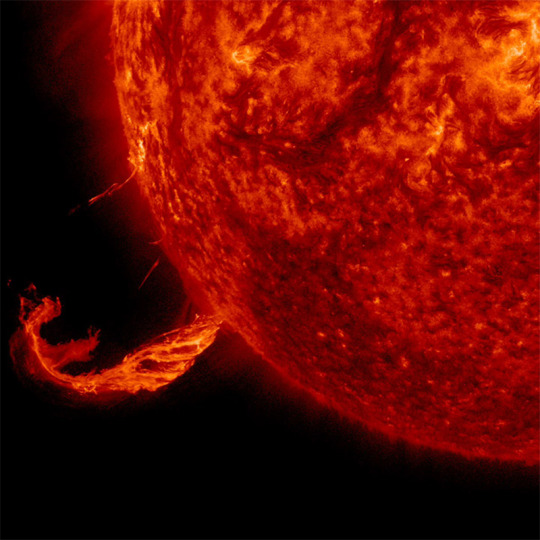
Invisible Threads: New data from extreme solar missions are finding that typically weak magnetic forces might bundle together to drive the massive jets of plasma that leap from our sun’s surface. Credit: Solar Dynamics Observatory, NASA.
And yet for all this magnetic abundance in the universe, the fields themselves are one of the weakest phenomena in the natural world, so feeble they can almost always be ignored in any consideration of physics. They rarely play a starring role in astrophysical processes; they simply seem to exist as a happenstance.
On Earth, it takes the combined might of the entire molten core to generate a magnetic field strong enough to gently nudge a compass needle around. For any living creatures on Earth, with the exception of migratory birds and a handful other species, if we were to lose our magnetic field, we wouldn’t really notice it in the day-to-day. The same holds true for the vast majority of astrophysical cases: The magnetic fields are there, winding throughout the universe, but are relegated to the role of non-speaking background actors, not one of the main cast.
Our sun, being a giant ball of plasma, naturally has a magnetic field of its own. It’s not particularly strong, however, only roughly twice as strong as Earth’s, and less than a quarter the strength of Jupiter’s. And, honestly, even though magnetic fields are approximately everywhere in the universe, they don’t seem, usually, to do much of anything.
But for decades, some bold astrophysicists, like the pioneering Eugene Parker, for whom the Parker Solar Probe was named, suspected that magnetic fields might play an outsized role in the radical dynamics of the sun. And so, the Probe, along with the Solar Orbiter, were launched with instruments specifically designed to measure the strength and scope of the sun’s ever-changing magnetic fields. Combined with more traditional instruments, like heat-resistant telescope optics and particle detectors, the teams behind the missions hoped that the probes might alight on some strange, intricate connection between the sun’s magnetic fields and its awesome displays of raw power.
Magnetic Fields Can Twist And Bundle Themselves Together, Transforming From Weak Threads To Powerful Cables.
To accomplish this, the Parker Solar Probe had to take an Icarian risk. In April 2021, NASA’s Parker Solar Probe became the first instrument ever devised by human hands to “touch the sun,” sailing into its inferno of a corona, where temperatures soar to 2 million degrees Fahrenheit (200 times hotter than the surface of the sun itself). Whipping around our home star at a speed of more than 90 miles per second—also setting a record for the fastest spacecraft in history—Parker approached within about 6.5 million miles of the solar surface. Spending only a short time at that close distance on that pass, the Probe collected as much data as possible: mapping the solar surface, measuring the stream of high-energy particles traveling through the corona, and measuring the magnetic fields as they twist and wrap throughout the sun’s environment.
From this extreme front line, Parker has been beaming floods of data back to Earth, where scientists are still processing and analyzing them. What is becoming clear is that the sun’s magnetic fields are operating with an unusual superpower—one that enables them to leap from the background to become a major player on the stage of the sun. To speak and have strong opinions of their own. To transform and shape the worlds around them.
We are learning that when it comes to the surface and atmosphere of the sun, magnetic fields are usually quiet. But when they speak their minds, we can’t ignore them.
The superpower is this: Magnetic fields, though typically humble on their own, under the right conditions can twist and bundle themselves together, transforming from weak threads to powerful cables. These knotted, self-wrapped twines snake in and out of the solar surface, threading deep into the plasma heart of the sun and far out into the corona. Once in place, they become far stronger than average, no longer responding to the motions of the plasma around them, but instead directly their own flows.
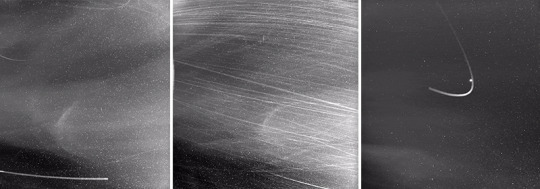
Into The Fire 🔥: A new paper describes the Parker Solar Probe’s safe passage through a coronal mass ejection event—captured here in a burst of plasma from below. Credit: NASA/Johns Hopkins APL/Naval Research Lab.
We see this most clearly during the eruptions of solar prominences. When we observe the great arches of plasma reaching out and back into the sun, we are witnessing the flow of superheated electrically charged plasma forced to follow the bundles of magnetic field lines.
The tangled mass of twisting magnetic field lines can, however, reach a critical breaking point. If the fields become too tightly woven, too constricted, then plasma piles up at either end. This drives the magnetic fields even tighter together, and eventually, if the pressure becomes too great, they snap. This snapping of the magnetic field releases an enormous amount of pent-up energy. First in the form of X-ray radiation—the solar flares. And if the magnetic bundles go deep enough into the bulk of the sun, it can lead to the launching of material along the broken lines of magnetism in the form of a coronal mass ejection, like the one Parker flew through last fall, described in a new paper.
With the Parker and Solar Orbiter, scientists have been able to watch these processes play out in real time. The collection of magnetic fields, the bundling together into thick ropes, the channeling of plasma, the storing of energy, and the ultimate release of the sun’s magnetic fury. Scientists have now been able to watch—close up—as kinks in the magnetic field lines zip up and down, in and out, transporting energy from the surface of the sun to the corona, heating it up. As the interior of the corona heats, the outer layers energize and detach completely, becoming the solar wind.
Space Weather Forecasts Are Essential to Protecting Our Satellite 🛰️ Infrastructure And Electricity Grids.
These aren’t just abstract explorations of some distant astronomical target. This is our sun—the source of all light and warmth here on Earth, as well as a source of potential danger. When solar flares erupt, the resulting X-rays bombard our planet. When coronal mass ejections race outward, they can fly in our direction.
Understanding the dynamics of the sun, especially the critical role that tangled magnetic fields play, can help us make better space weather forecasts. These forecasts are essential to protecting our satellite infrastructure—and even our Earth-based electricity grids and radio communications, whose weaknesses were evident during the especially strong solar storm in 1989. Right now, solar storm forecasts rely on constant observations of the sun’s activity, waiting for a burst to happen and sending out an alert. But often, we only know a storm is approaching after it’s already been launched from the sun, giving us just several minutes’ lead time. Understanding the role of magnetic fields can help us spot the precursors to a storm as it’s building, leading to longer warning times and a better sense of a particular storm’s anticipated severity.
But even with this newly emerging picture of the sun’s temperamental and powerful magnetic forces—and our increasing vulnerability to their whims—there is much more work to be done.
The Parker Solar Probe and Solar Orbiter will continue their dangerous missions for the next few years, observing carefully with each new eruption, each new storm, for the delicate lines of magnetic fields to conspire. As the Solar Orbiter continues to circle the sun from a comparably cool 26 million miles’ distance, the Parker will keep hurling itself around Venus to get closer and closer to the sun, with its next dip into the corona scheduled for next week, on September 27. By the time it sails its final pass, anticipated in December 2025, it is expected to travel within 4 million miles of the sun’s surface before running out of fuel. From all of these flybys, data will be mounting for scientists to sift through and make sense of over years—and likely decades—to come.
Next year, the ESA hopes to launch Proba-3, an experimental mission to test a new kind of multi-satellite formation that could deliver even more details about the sun’s tumultuous outer layers. Combined with dedicated ground-based observatories, astronomers hope to continuously monitor the sun in as many ways as possible, to further elucidate the complex and ever-changing relationship between magnetic fields and the solar plasma that births them and can then be controlled by them.
Far from any mechanical forces envisioned by early astronomers, the driving forces of the sun’s powerful displays are typically so quiet that they eluded suspicion for centuries. And hopefully, with even more daring missions in the future, humanity will continue to unravel more mysteries of the unseen power of magnetism in our universe.
#Astronomy#Sun’s Violent Outbursts#Sneaky Force#Nautilus#Paul M. Sutter#NASA’s Parker Solar Probe#ESA’s Solar Orbiter#Universe | Magnetic Fields#Stars ⭐️ | Turbulent Flows | Charged Particles#X-Ray 🩻 Radiation ☢️#Scientists#Satellite 🛰️#Space Weather Forecasts#Planet Earth 🌎#Proba-3#Hope | Daring Missions | Future#Future | Humanity#Mysteries | Unseen Power | Magnetism
0 notes
Text
Ghost King Phantom was an odd addition to the League. J’onn was often the last to find others odd but from the get-go, Phantom was the only quiet spot he’d have in his telepathic field. At first, it was off putting as most of the people that slipped beyond the reach of his immediate field tended to be villains and the like. But as Phantom remained in the Justice League, J’onn had come to learn to appreciate the calm spot in the turbulent sea of his friends’ and coworkers’ thoughts.
“You have taken to me faster than the others. Why is that?”
Phantom hummed purringly, another peculiar sound that J’onn had yet to see any of his human or alien heroes recreate with any success. They sat at their usual spot, face facing the cosmos and backs guarded by their friends. Plus, J’onn and Phantom could look directly into the sun without painfully loosing their sight.
“I guess I’ve always been fond of the stars. Of space, and everything in it. What about you? Why did we become friends so fast?”
J’onn shook his head, a human motion he’d learned a long time ago to imitate. “No, we became slower friends than most, as my telepathic abilities allow for easier communication and understanding of one another’s motives. With the exception of Batman but I have found he is often the exception to most expectations.”
“That checks out,” King Phantom laughed. “Well, I’m glad we became friends. It’s very cool to meet a Martian. Space is one of my Obsessions, you see.”
J’onn nodded. “I see. I am sorry that I am the only Martian you will meet.”
“You are?”
J’onn nodded again, slower. Sadder. His facial muscles, in this form, does not imitate human patterns well and he knew that most people could not pick out his emotions without his verbal expression.
Intuition tells J’onn that Phantom knew regardless.
“Would you mind telling me what happened?” His voice is gentle, the emotions that Phantom pushes at him are gentle and questing, but not demanding. It has been a long time since anyone has asked him of memories he clung to. And so, J’onn J’onzz speaks in the way that was natural to him, the way his people communicated.
With his mental voice flowing into Phantom’s head, J’onn tells him of the wonders that used to be his home. He provided images and sounds of how his home shone as the sun rose, how the shadows that fell when the sun dipped beneath the horizon felt as comforting as a Martian’s first telepathic cradle. He tells Phantom of his twin brother, grief and agony entwined in the memories of someone he had loved. He spoke of his wife and their daughter, and their cozy home on the windswept plains of Mars.
King Phantom sat still with him as the Watch-Tower moved along, around a king and his friend who was recounting the stagnant grief of his past.
J’onn tells him of the virus, borne of his twin’s hatred, and how he watched everything around him burn. How he had desperately tried to prevent his wife and daughter from using their telepathic abilities. He spoke of his failures. He wove together a tapestry of insanity and grief, built upon the burning bodies of his wife and their beloved daughter. He tells Phantom how the Mars now was just ashes and dust of his former home. How he could not look upon the planet and not see the shades of his wife and daughter and parents and friends, walking upon a barren planet that no longer held anything familiar to the last Martian.
Phantom had hummed again, a soothing rumble. Sadness dripped from the edges of his consciousness.
“If it was not for the Doctor, I would be dead and shattered.” J’onn spoke for the first time in three hours. “It is… less painful to live. I have purpose.”
“I am glad that you are not either of those things.” Phantom stood. “Come with me. I have to show you something.”
J’onn trusted Phantom, and thus followed the king into the glowing green portal.
They flew past many doors, Phantom often glancing at him before shaking his head and changing directions.
They stopped at a door that felt familiar. J’onn knew it from somewhere.
“Go ahead, open the door. But know that you can’t stay long. You don’t belong to this realm quite yet. Not for quite a while.” Phantom moves, hand gesturing towards the door without a knob.
“How..?”
“How else? You have telekinesis, don’t you?”
J’onn blinked. Right. He opened the door and- oh.
The door warped with the screaming storm of grief and love and oh-how-I’ve-missed-you that J’onn unleashed.
Because there in front of him were M’yri’ah and K’hym, his wife and daughter.
The door was an imitation of his home, back when he had not known true loss.
“Impossible,” he stumbled back.
“You are in the realm of the dead. You didn’t think the title of the Ghost King was for fun, did you, J’onn?” Phantom smiled and- a move J’onn would definitely engage in petty payback for, later after he’d gotten over the shock- pushed him flying right into the room.
M’yri’ah and K’hym cradled him with telepathic swirls of love and husband!-dad!-love-love-love-safe!
And J’onn shuddered and gathered the his world in his arms to say goodbye.
——
#danny phantom#j’onn j’onzz#dcxdp#dpxdc#justice league and the ghost king#basically me being sad about Martian man hunter bc I love him
2K notes
·
View notes